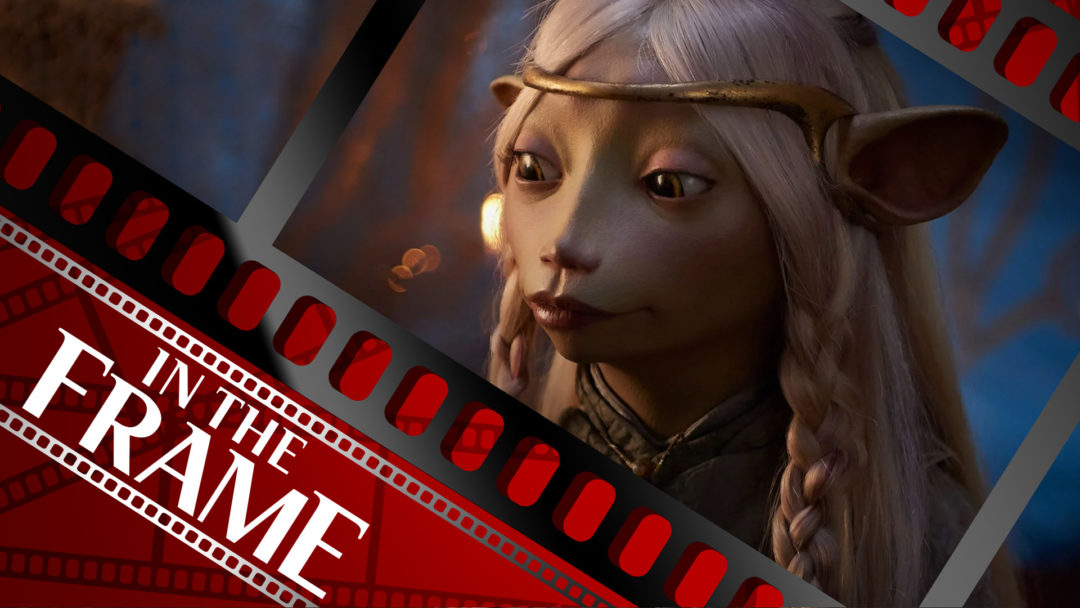The Dark Crystal: Age of Resistance is a 10-hour-long ode to craft. Narratively, there’s not a lot going on within those 10 hours. In terms of basic storytelling, Age of Resistance suffers from what has come to be known as “the Netflix Bloat,” the sense that a story has been padded out and extended in order to fit a predetermined runtime. Characters are constantly captured and escaping and wandering through the world rather than reaching any particular destination.
Age of Resistance is very clearly a collection of familiar fantasy clichés, informed by contemporary fantasy blockbusters. The series opens with an extended expository monologue from Sigourney Weaver, which recalls Cate Blanchett’s introduction to The Lord of the Rings: The Fellowship of the Ring almost 20 years ago. The voice cast is populated with veterans of Game of Thrones, including Nathalie Emmanuel, Lena Headey, and Natalie Dormer.
It is possible to derive some vague allegory or social commentary from Age of Resistance, with its portrayal of things like climate change or economic exploitation or even fantastical racism. However, there is little about the writing that distinguishes the show. Its characterization feels very broad, and its attempts at humor are often forced.
The most impressive thing about Age of Resistance is how little any of that narrative shallowness actually matters. Age of Resistance is a visual marvel, an astoundingly beautiful piece of work. All the plot contrivances and delaying tactics are simply an excuse to spend more time immersed in the world of the show.

The series is the product of a staggering amount of work; the production team built 89 sets and sometimes had up to 100 puppeteers working with three puppeteers to a puppet. The primary cast is expansive. There are at least 36 recurring characters, each with their own distinct personality and appearance. Everything within Age of Resistance has been carefully and lovingly designed.
Modern special effects are often about disguising the unreality of an image, pushing towards verisimilitude. This is perhaps most notable with the live-action adaptations of classic Disney animation like The Lion King. Computer-generated effects are often intended to trick the audience, convincing them that what they are seeing is realistic. Modern technology has reached a point where these sorts of image manipulations can blur the boundaries of reality.
Age of Resistance’s embrace of an older special effects aesthetic is refreshing. The production team uses computer-generated imagery where necessary, but they mostly rely on the magic of Jim Henson’s Creature Shop. The creative team crafts puppets and uses animatronics to bring the world of the series to life, including the Muppet-esque Podlings, human-sized Skeksis, and elfin Gelflings.
The puppets in Age of Resistance are never intended to be particularly convincing or realistic, like a documentary smuggled from the planet Thra. The audience is never expected to believe that Gelflings or Skeksis could actually exist. After all, some of the horror and violence within the show would be too much to bear if the creatures were rendered especially life-like.
Instead, the audience is asked to marvel at the technique and skill on display. This has always been the magic of Jim Henson, the blending of obvious unreality with sheer craft. Kermit the Frog riding a bicycle in The Muppet Movie is frequently cited as one of the most impressive technical accomplishments in the history of cinema. As Roger Ebert began his review, “Jolson sang, Barrymore spoke, Garbo laughed, and now Kermit the Frog rides a bicycle.” In his cinema history book Rosebud Sleds and Horses’ Heads, Daily Telegraph culture critic Scott Jordan Harris contended, “Like all the most impressive magic tricks, this illusion occurs in plain sight.”
Kermit’s bike ride wasn’t so impressive because the audience believed that Kermit was a real frog who had been trained to operate a pedal-driven, single-track vehicle. The viewer knows that Kermit is a puppet who is being mechanically operated. However, watching Kermit ride a bicycle invites the audience to appreciate how much care and attention went into making the movie. The audience wonders how such a feat was accomplished, which allows them to appreciate the construction.
Age of Resistance works largely on those terms. The puppets are incredibly expressive and dexterous. The production design is staggering, even when it comes to something as simple as the establishing shots of clouds breaking over the mountains of this distant world. Simple sequences of two characters talking become strangely compelling, as the camera quietly invites the audience to marvel at the detail of this imaginary realm.
Lovingly rendered creatures often move through the background of shots, barely in focus and occasionally completely obscured. Beautifully painted eyes shift and focus with intensity, blinking and leering in impressive detail. As the characters journey through forests, leaves sway gently in a manufactured wind on the closed set. Tears stain the cheeks of these puppets, even though the audience knows that their eyeballs do not need moistening.

There is a beautiful paradox at the heart of Age of Resistance. The audience knows that a lot of this world actually physically exists as actual puppets being filmed on sets. Age of Resistance probably employs a lot less computer-generated imagery than other science fiction and fantasy shows like The Orville or Star Trek: Discovery. However, Age of Resistance also spends a lot less time trying to convince the audience that any of this is real.
The creators of The Dark Crystal: Age of Resistance ask the audience to appreciate the show as a work of art, to embrace the unreality of it all, to recognize these puppets and these sets as man-made constructions. They never try to fool the audience with gestures towards verisimilitude or strive to make Thra resemble the world that the viewer knows. That just makes it all the more magical.





